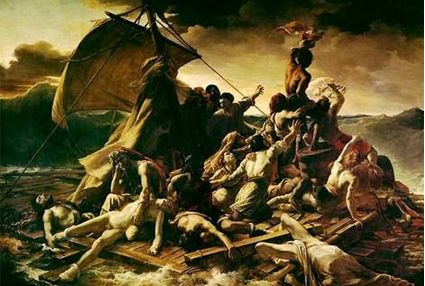I WAS 15 when I first went, reluctantly, to the Louvre, and I didn't much like old pictures. I remember countless dark and obscure religious paintings, time-smoked martyrdoms and baptisms and visitations and annunciations; I remember murky brown landscapes and shadowy Dutch still lifes, full of skulls and gleaming pewter and pendulous spirals of lemon peel; I remember wanting to leave and buy a chocolate eclair from one of the patisseries on the Rue de Rivoli.
But then I saw one old picture that seemed, somehow, different from the rest. It was by Theodore Gericault, it was called The Raft of the Medusa, and it had something to say (or at least I thought it did) about me and my life. I thought I understood it, this enormous painting (and it is truly enormous: no shrunken reproduction can remotely do justice to its intimidatory scale) of men abandoned at sea, on a makeshift raft, desperately trying to attract the attention of a far-off ship.
Gericault's painting was based on a true story, but I knew that it was not really about a group of early 19th-century castaways. It was a metaphor. It was about wanting something, or someone that will almost certainly prove to be beyond your grasp - in my case it was the unattainable 19- year-old sister of the Parisian boy with whose family I was then staying to improve my halting French. It was about longing.
That, anyway, was my romantic adolescent reading of The Raft of the Medusa. Since then, I have changed my mind about the picture more times than I like to remember, but I have never quite grown out of my obsession with it. Last autumn the BBC gave me the chance to change my mind again when they commissioned...

Adrift on the sea of interpretation
06-04-1993

